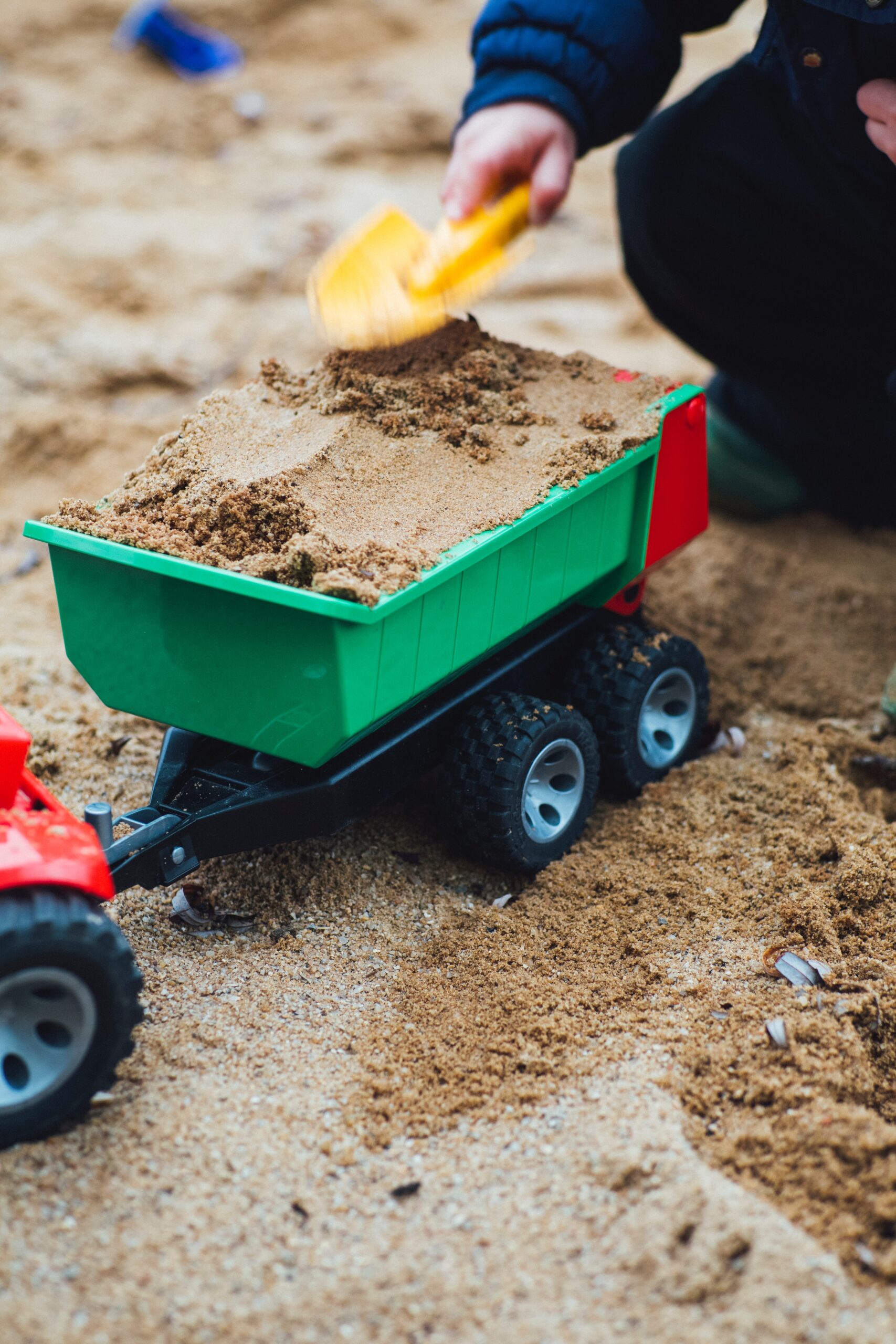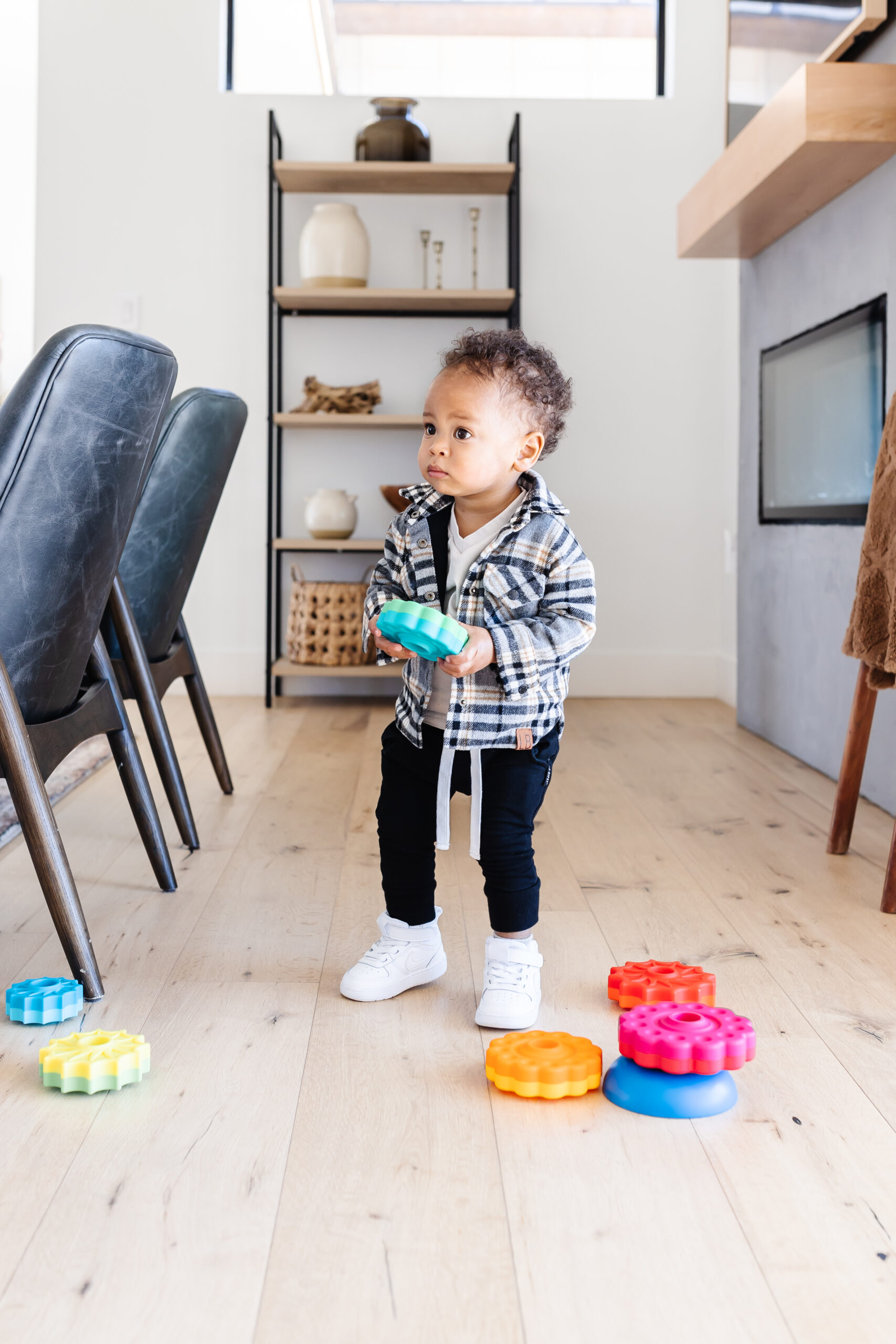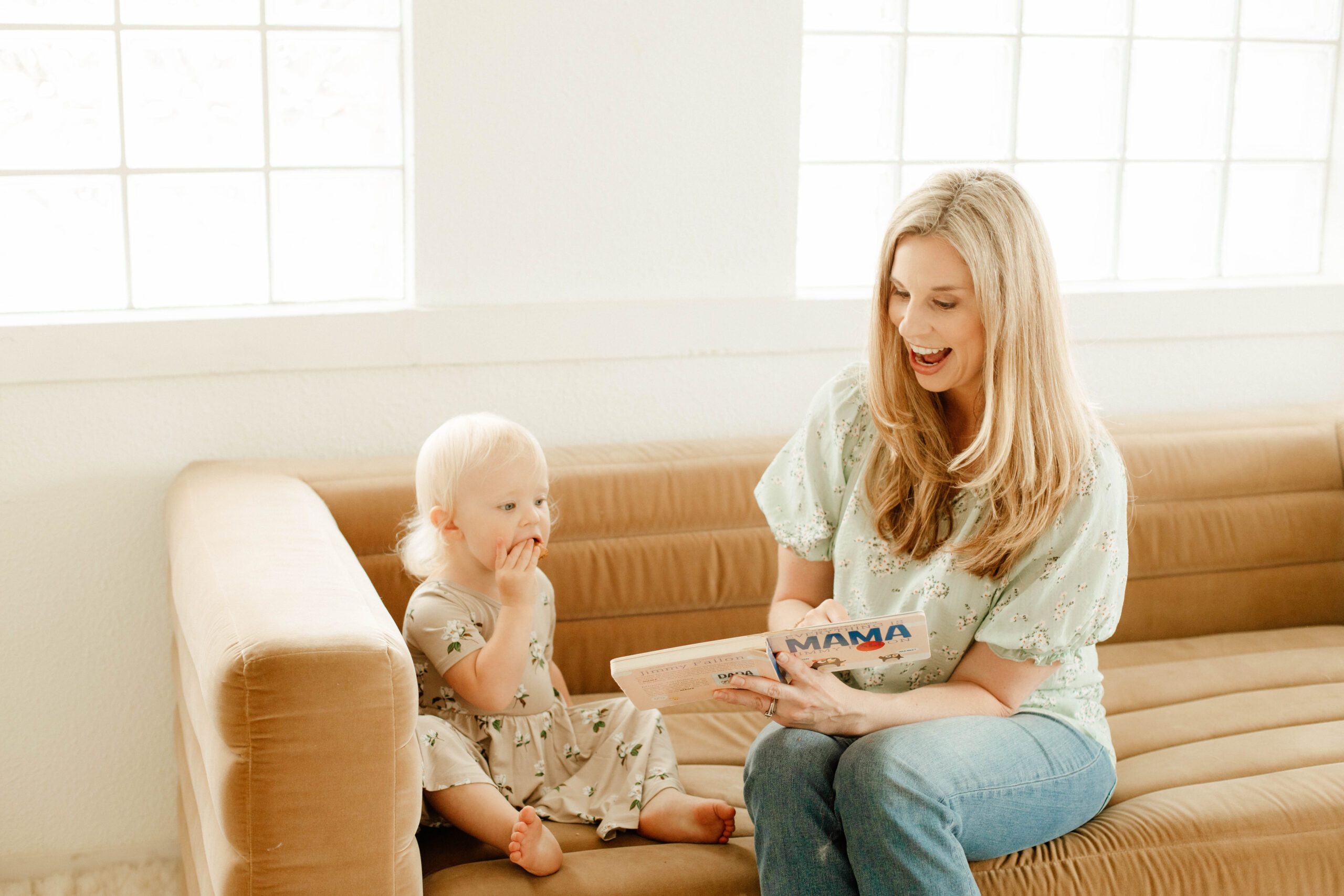
When little ones are engaged, they are ready for learning. The longer they stick with an activity, the more opportunities there are for language and communication! We can use what they are already interested in to teach new skills. Here are some examples:

Expand the play: Model new ways to play: If your kiddo always lines up his cars, model new ways to use them. Make the car go down a “slide” (aka any flat object that is tilted or a couch cushion). Make the cars “crash” while adding fun language such as “boom!” My kiddos love to “wash” trucks with a squirt bottle or bowl of water. Sometimes we just need to show kiddos new ways to play. Playing in new ways brings opportunities for new language.
Expand communication opportunities: By simply putting favorite items in a clear container, you can create opportunities for your child to request. I like to use the “Rule of three” from Cari Ebert. Hold the item near your mouth and model the word. Pause and give your a child a chance to imitate. If they don’t say it, move the object closer to them and model the word again. Finally, extend your arm all the way and provide one more model before giving the object to them. This reduces communicative pressure, which is shown to be counter productive.
Expand vocabulary: We don’t only use language to get our wants and needs met. We use it to describe, ask for help, ask and answer questions, comment, share information, and connect with others. We can fall into a rut of working only on requesting with little ones. Instead, we want to model all types of language. For example, with a truck, we might model words like color words, big/small, fast/slow, dirty/clean (if “washing”), bumpy (wheel), open (the door,) etc. Try to model one word beyond what your child is using. For example, if they are not using many words yet, model single words. If they are primarily using single words, model two words such as “green truck” or “big wheel.” Use words such as “the” and “a”. We want to model grammatically correct phrases as much as we can. (Read more about telegraphic speech here).
Expand turn-taking: Conversations are essentially verbal turns between two people. We can start to work on this through simple turn taking games and activities such as rolling a ball back and forth. If your little one isn’t quite ready to share their favorite toy, grab your own. For example, if they enjoy sending a truck down the slide, grab your own truck and do it too!
Expand imitation: Even if your little one isn’t imitating words yet, you can start with imitating actions. When you grab your own object and do something new and fun with it, your kiddo will probably want to do it too! This sets the stage for imitation. Sometimes it’s easiest to start with actions. Actions pair well with fun words such as “whee” or “beep!” Kiddos are more likely to imitate these “environmental sounds” since they are more fun and presented with less pressure. They are often motorically easier to produce. For example, “Neigh” is one consonant and one vowel, where as a word such as “horse” is more complicated.
Before hiding that toy your child always gravitates towards, see if you can use it as a bridge instead. When we follow a child’s lead, we show them we are listening to them and value their interests. When are they actively engaged in the activity, it gives us all kinds of opportunities for connection and language.
 Brooke Andrews, M.A. CCC-SLP/COM is owner of The Speech Dynamic and specializes in providing speech, language, and feeding therapy in Houston, TX. Her clinical expertise include early intervention, myofunctional therapy, and apraxia of speech.
Brooke Andrews, M.A. CCC-SLP/COM is owner of The Speech Dynamic and specializes in providing speech, language, and feeding therapy in Houston, TX. Her clinical expertise include early intervention, myofunctional therapy, and apraxia of speech.






